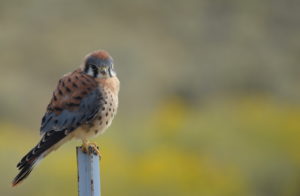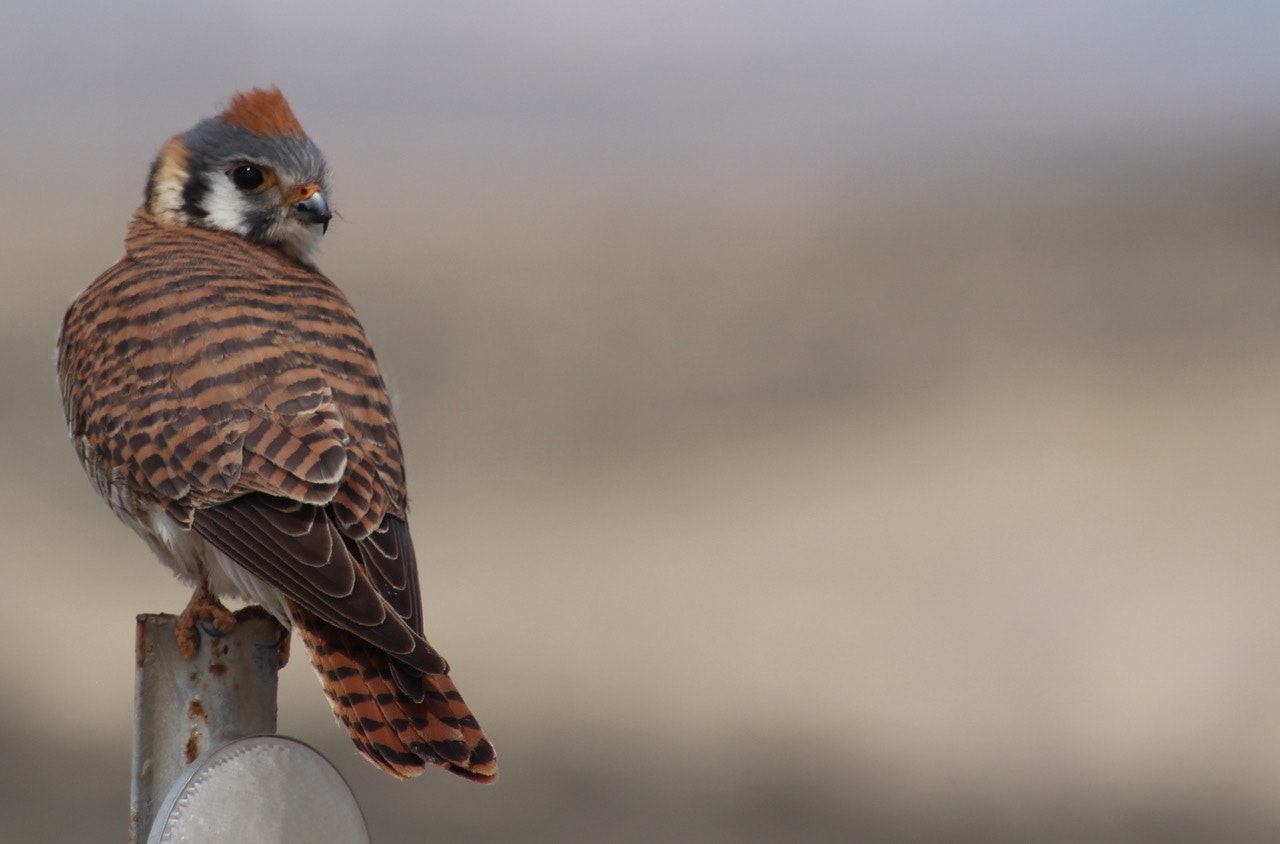By Cat Urbigkit, Range Writing columnist for Cowboy State Daily
In all my half-century of life, I’ve never encountered a kestrel without being happy about it. Just seeing a kestrel perched on a wire gives me a thrill – it always has, and I suppose it always will.
What is it about this little bird that causes such a reaction? A kestrel is the size of a mourning dove, and is striking in its beauty, but its level of intense fierceness is all out of proportion. A kestrel’s strength, agility, and fancy footwork allows this smallest of North American falcons to take on opponents far outside its six-ounce weight class – it’s the Sugar Ray Leonard of raptors (and Lordy, I loved watching that boxing master).
My Louisiana friend Matthew Mullenix (who literally wrote the book on the use of kestrels in falconry: American Kestrels in Modern Falconry) described them this way: “Kestrels’ speed over extended distances is not great, but they are aggressive, nimble and determined in close quarters.”

The American kestrel is North America’s most abundant bird of prey, often seen perched on fence posts or wires with a seemingly intense scowl aimed at those who dare disturb their hunt. The subject of the hunt? Kestrels often prey on grasshoppers, dragonflies, spiders, moths, voles, mice, snakes, small songbirds, and sometimes even kill prey as large as red squirrels and Northern Flickers. Kestrels pounce on their prey, seizing with their feet, and often carrying victims back to a nearby perch to feast.
Farmers and ranchers have long understood that kestrels can help to control pest damage, but researchers recently took a pen to paper and tallied the dollar value of kestrel services to Wisconsin’s fruit growers.
Kestrels are cavity nesters, using old woodpecker holes, tree hollows, or rock crevices to nest. According to the Cornell Lab of Ornithology, the male kestrel will search for potentially suitable nesting locations, and “when he’s found suitable candidates, he shows them to the female, who makes the final choice.” (Not to anthropomorphize, but this seems familiar.)

Since we know that kestrels need cozy nooks for nesting, humans can welcome more kestrels into their neighborhoods by erecting nesting boxes. That’s what Michigan State University and USDA Wildlife Services officials did in eastern Leelanau County, Michigan, installing 25 nesting boxes within or next to cherry orchards.
I can’t see a downside to increasing kestrel presence in neighborhoods, whether urban or rural. With American kestrel populations on the decline for decades (for reasons still unclear), it makes sense to install kestrel nesting boxes, both to curb this decline, and to increase the presence of this species that offers such valuable ecosystem services. For information about how to build nesting boxes, check out The Peregrine Fund’s American Kestrel Partnership.
The researchers discovered significantly less fruit-eating birds at orchards with active kestrel boxes than those without nesting kestrels, and for every dollar spent on nest boxes, $84 to $357 of sweet cherries would be saved from fruit-eating birds. Not only did kestrels kill and consume birds that damage fruit (including robins, starlings and blue jays), but their presence acted to increase the perceived predation risk to the extent of decreasing the abundance of fruit-eating birds in orchards with kestrel nest boxes. Kestrels didn’t kill a large number of birds but did so on such a regular basis that it elicited a strong antipredator behavior in other birds, or as the researchers phrased it, the predation risk was “reinforced by actual predation events.”
Cat Urbigkit is an author and rancher who lives on the range in Sublette County, Wyoming. Her column, Range Writing, appears weekly in Cowboy State Daily.





